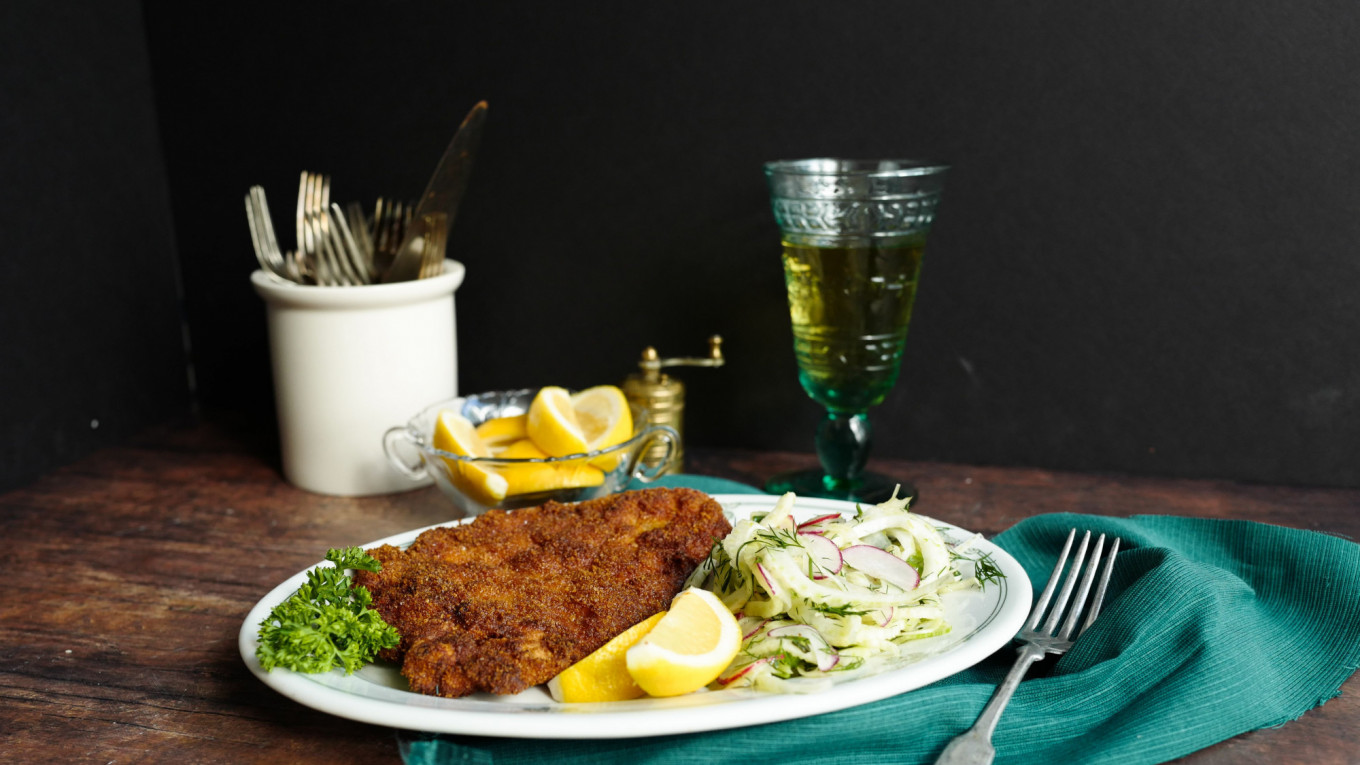Years before I ever tasted it, I was pre-conditioned to adore schnitzel. Maria in “The Sound of Music” listed it along with “cream-colored ponies” and “crisp apfelstrudel” as one of her “Favorite Things” during the famous thunderstorm scene with the pajama-clad Von Trapp children. This inspired the first order of business on my first trip to Austria, to get to the nearest restaurant and try authentic schnitzel. It did not disappoint: a sizzling breaded cutlet of veal covering most of my overlarge plate came glistening with a shatteringly crispy golden batter covering moist meat, with a gentle spritz of lemon juice — a remarkable combination of flavors equal to assuaging the worst “dog bite or bee sting.” I was a little surprised to note that they did not pair my schnitzel with noodles, as Maria recommended, but with a cucumber salad, which the very kind and patient waiter — clearly asked to explain the absence of noodles on a regular basis — told me was the more traditional accompaniment.
This, of course, was Wiener Schnitzel, or “Vienna Schnitzel,” which along with Sacher Torte and the aforementioned apfelstrudel is one of the key culinary hallmarks of Austrian cuisine. Wiener Schnitzel is always made with veal, but the word “schnitzel” means “little cutlet” and schnitzel is just as often made with beef, pork, or game (called “hunters’ schnitzel”) or my particular favorite thing: chicken schnitzel, which in Austria is known as “poor man’s” or “janitor’s schnitzel.” But though Vienna has laid a strong claim to schnitzel, its origins are much older than Austria and lie far from Vienna.
Schnitzel’s most colorful origin legend comes from always colorful Byzantium, where Emperor Basileios (867 - 856 AD) had a penchant for food cooked in thin sheets of gold leaf. When this habit threatened to bankrupt the Eastern Roman Empire, chefs in the Imperial kitchen concocted a more affordable dish of breaded cutlets fried in oil, which mimicked the glitter of gold and minimized the overhead. The popular dish spread across the Mediterranean, thanks to strong Byzantine ties with Northern Italy. It moved further afield with Arab soldiers and traders, who brought the breading method to Southern Spain. In Milan, a version of the Emperor’s “gold” cutlets — Cotoletti alla Milanese a breaded veal chop — became a favorite regional specialty, where it is still widely enjoyed today.
When Milan was incorporated into the Crown Lands of Austria in the early nineteenth century, the Habsburgs swiftly annexed Cotoletti alla Milanese as well. From Vienna, the dish traveled east, across the sprawling Austro-Hungarian empire and into Imperial Russia, enjoying universal popularity wherever it went. Schnitzel survived the Russian Revolution and maintained its popularity during the Soviet era, gaining an entry in the authoritative “Book of Tasty and Healthy Foods,” as “отбивная,” a piece of “beaten” meat or a pounded cutlet of beef, pork, or chicken.
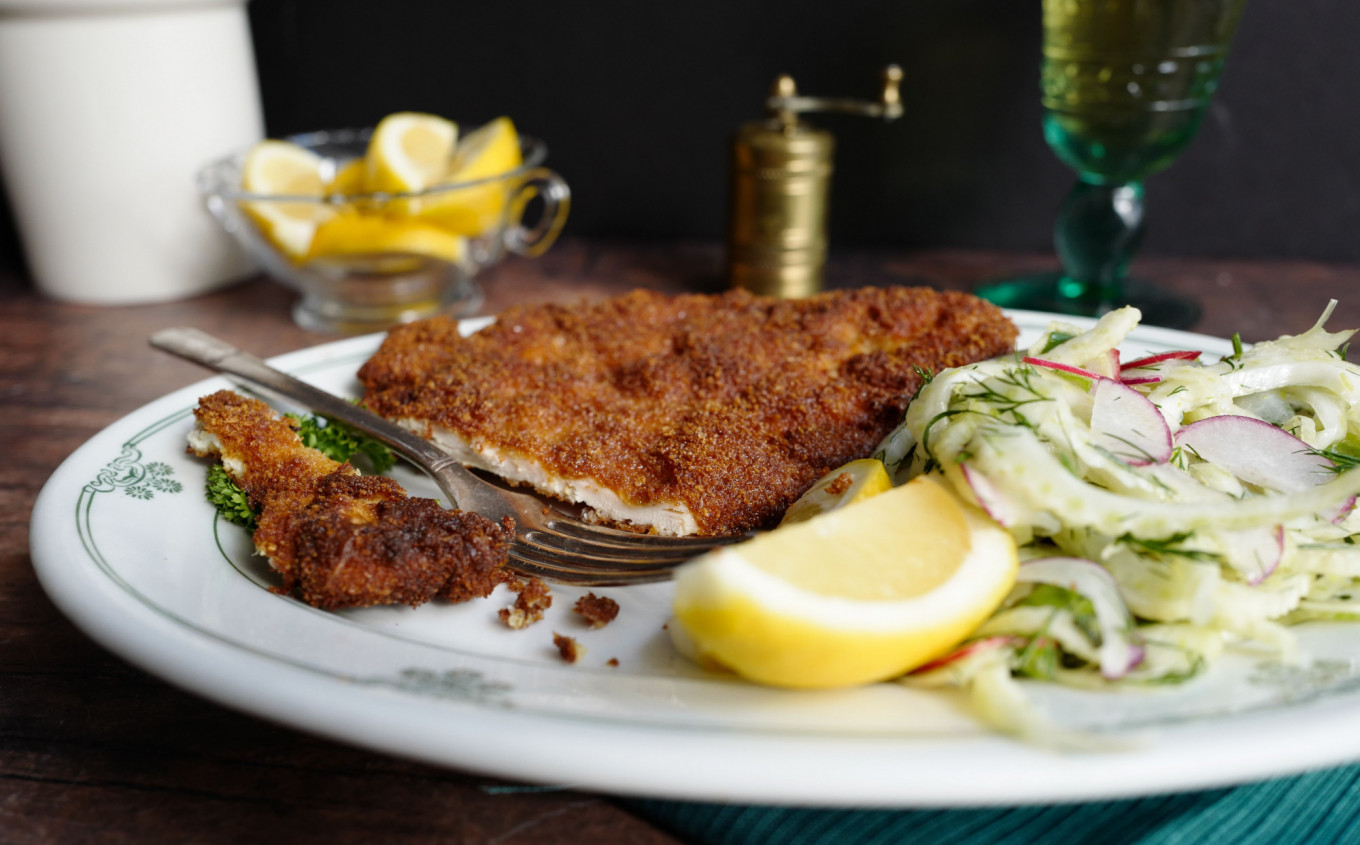
As schnitzel traveled, it adapted to its many adopted homelands. In Israel in the latter half of the twentieth century it has become something of a national dish, made with turkey rather than veal, spiced with za’atar and fried in chicken schmaltz in adherence with kosher laws. In America the descendants of Middle and Eastern European immigrants enjoy schnitzel sandwiched in a soft roll, slathered with mayonnaise and accompanied by French fries. In the Soviet Union, the immensely popular twentieth-century Chicken Kiev is a riff on schnitzel made with a battered chicken breast stuffed with garlicky butter.
Thrifty homemakers appreciate the magic of schnitzel, which literally stretches a piece of meat and the relative affordability of its auxiliary ingredients, including bread crumbs, flour, and eggs. Epicureans relish schnitzel’s addictive crispy texture and buttery flavor.
Good schnitzel is hard to beat: light but satisfying, crispy on the outside, yet moist on the inside. Bad schnitzel — rubbery meat, gummy breading, and too much grease is all too easy to achieve, so be sure to follow a few easy but iron-clad rules. Remember that schnitzel should not be deep fried — these are not chicken McNuggets — a shallow fry is what we need here. The cutlet should be immersed in, but not submerged under, the fat. Choose your fat with care: regular butter and olive oil are both too low on the smoke point scale for schnitzel, which needs to fry quickly in hot fat — for no more than seven minutes. Clarified butter or ghee will give you the desired buttery taste and is always my first choice as the taste of the bread crumb topping is a big part of schnitzel’s appeal. Other options include duck fat, chicken schmaltz, or a neutral vegetable oil.
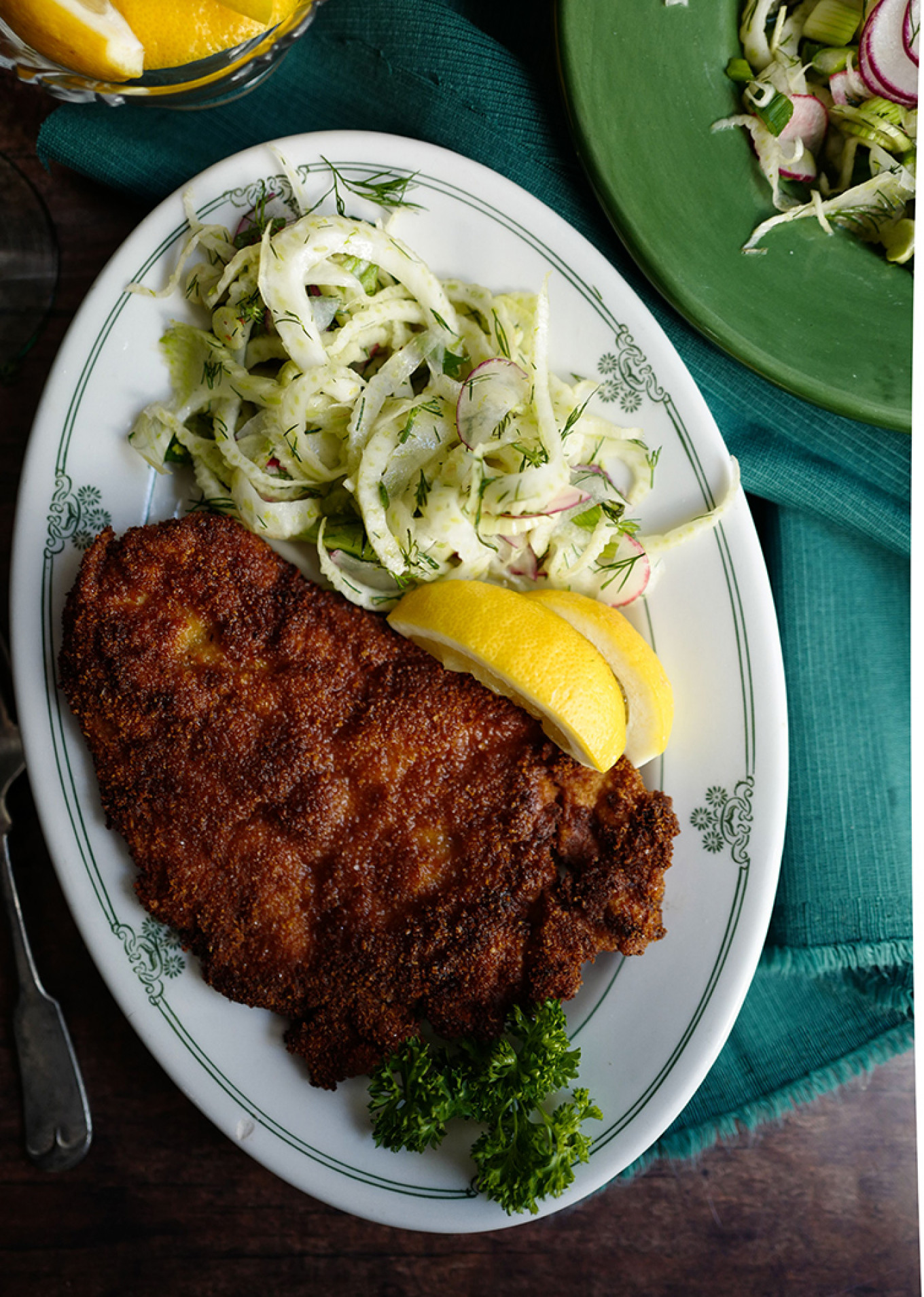
Injecting flavor into schnitzel is a tricky business. Traditionalists refuse to season any part of the dish, allowing the butter and meat to shine through with only a spritz of lemon juice and possibly a light dusting of salt once it is completed to compliment the natural flavors. More modern practitioners throw that idea out the window, jazzing up all three of the breading stages: hot sauce in the eggs, salt in the flour, and all kinds of spices in the breadcrumbs. I have found the middle road makes for the most consistent schnitzel. I whisk mustard into the egg coating as that seems the best place to infuse a nice tangy flavor note, but apart from that, I stick to seasoning the meat with salt and a little white pepper, then letting it rest for at least half an hour so that the meat tenderizes. Patting it dry before the breading ensures that the salt does not repel the flour.
Thanks to Rogers & Hammerstein, the phrase “schnitzel with noodles” will probably never leave me, but I do prefer schnitzel with a crunchy raw salad, which introduces tart notes to contrast with the buttery, meaty flavors of the main event. As I learned in Vienna, cucumbers are traditional, but I love to use fennel for the underpinning of licorice accents. This meal comes together quickly, though it is not one you can do ahead of time: it’s an action-packed twelve minutes from breading to serving — and schnitzel is at its best right out of the skillet with only the briefest of rests to ensure that it is not too greasy: in fin-de-siècle Vienna it was said that a man should be able to sit on a Wiener Schnitzel and not stain his trousers. Try that if you wish, but otherwise — enjoy everyone’s favorite breaded cutlet. Done correctly, this is as marvelous as… well, silver white winters that melt into spring.
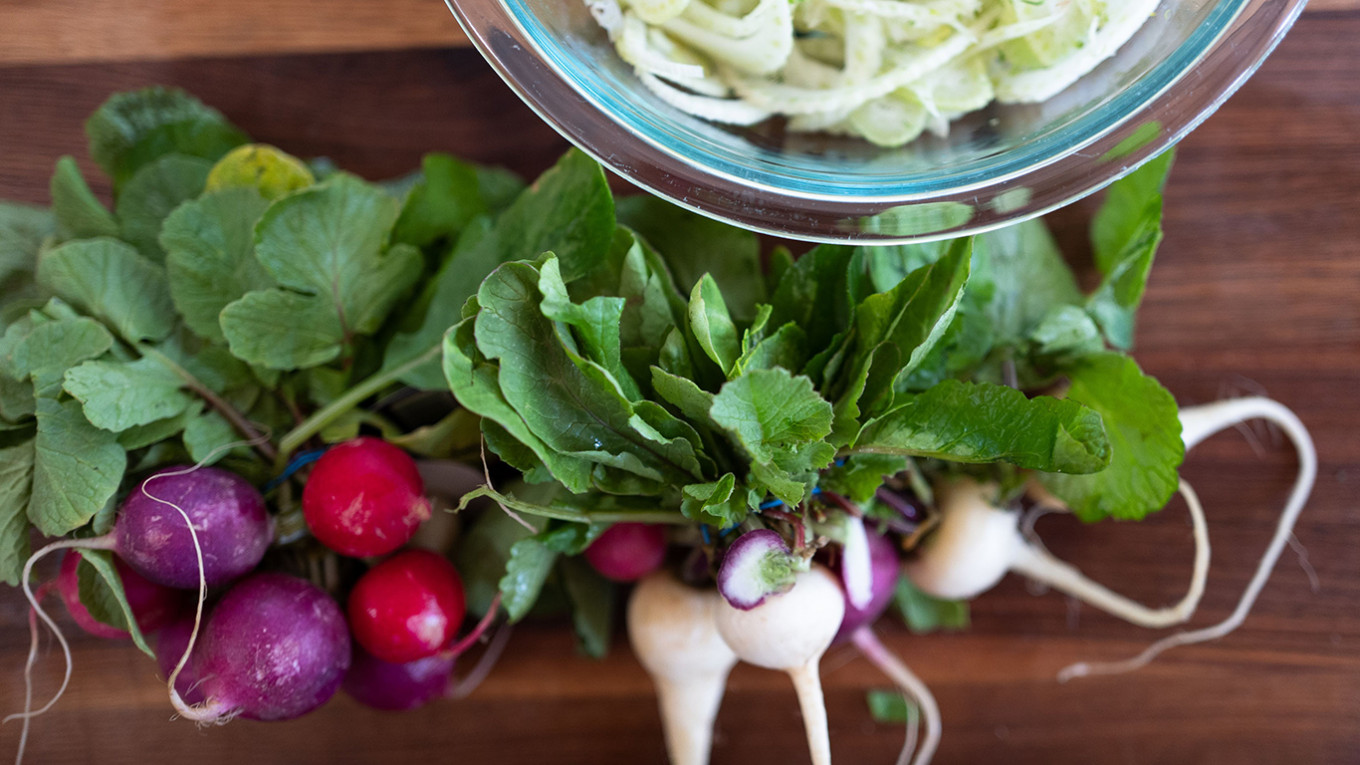
Chicken Schnitzel with Fennel and Radish Slaw
Serves 2
Ingredients
For the schnitzel
- 2 medium-sized boneless, skinless chicken breasts (roughly 1 lb or 500 grams)
- 2 sticks (1 cup or 220 grams) unsalted butter, ghee, neutral vegetable oil, or chicken schmaltz
- Salt
- 2 tsp white pepper
- 2 Tbsp Dijon-style mustard
- 3 large eggs
- 1 ½ cups (350 ml) flour
- 1 ½ cups (350 ml) Panko breadcrumbs
- 1 lemon, quartered
For the slaw
- 1 large fennel bulb, finely sliced on a mandoline
- 8 radishes, finely sliced on a mandoline
- 2 Tbsp fennel fronds or fresh dill
- 1 Tbsp kosher salt
- 2 Tbsp sugar
- 1 tsp caraway seeds
- 2 Tbsp white wine vinegar
- ¼ cup (60 ml) olive oil
- Fresh chopped herbs to garnish: parsley, dill, mint, etc.
Instructions
Make the slaw
- Whisk the vinegar, oil, sugar, and salt together in non-reactive bowl. Add the fennel, caraway seeds, and radish slices and toss to combine, making sure the vegetables are all coated with the dressing.
- Cover and refrigerate for at least 2 hours. Drain off any excess juice before serving and add more fresh herbs if desired.
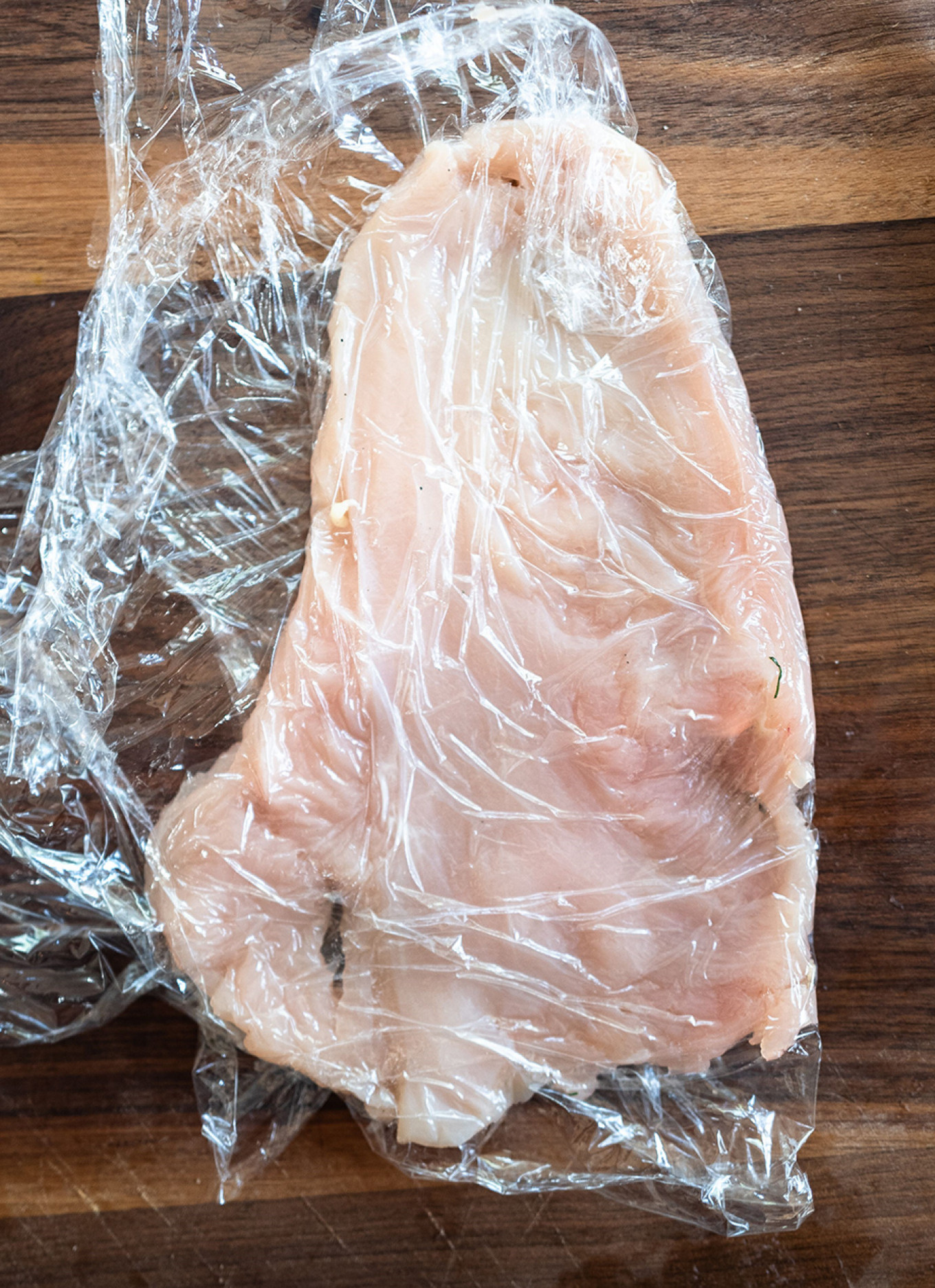
Make the schnitzel
- Clarify the butter in a saucepan: simmer on low heat until the milk solids separate and rise to the surface (about 10-15 minutes). Strain the butter through several layers of cheesecloth or paper towel until it is completely clear. Set aside.
- Place the Panko breadcrumbs into a food processor and pulse until they are the texture of fine sand.
- Cut off the tenderloin of each chicken breast and reserve for another use. Remove any fatty ends.
- Place each chicken breast between two layers of plastic wrap or inside a sturdy plastic bag. Use the flat end of a tenderizing mallet or a rolling pin to pound each chicken breast to a cutlet of approximately ¼-inch (3 cm) thickness. Go gently here, as the delicate meat will shred easily.
- Season both sides of the breasts with a good pinch of salt and white pepper, and let sit, covered by the plastic wrap for 30 minutes.
- Whisk the mustard into the eggs. Then set out each of the breading ingredients in a shallow dish slightly larger than the flattened chicken breasts.
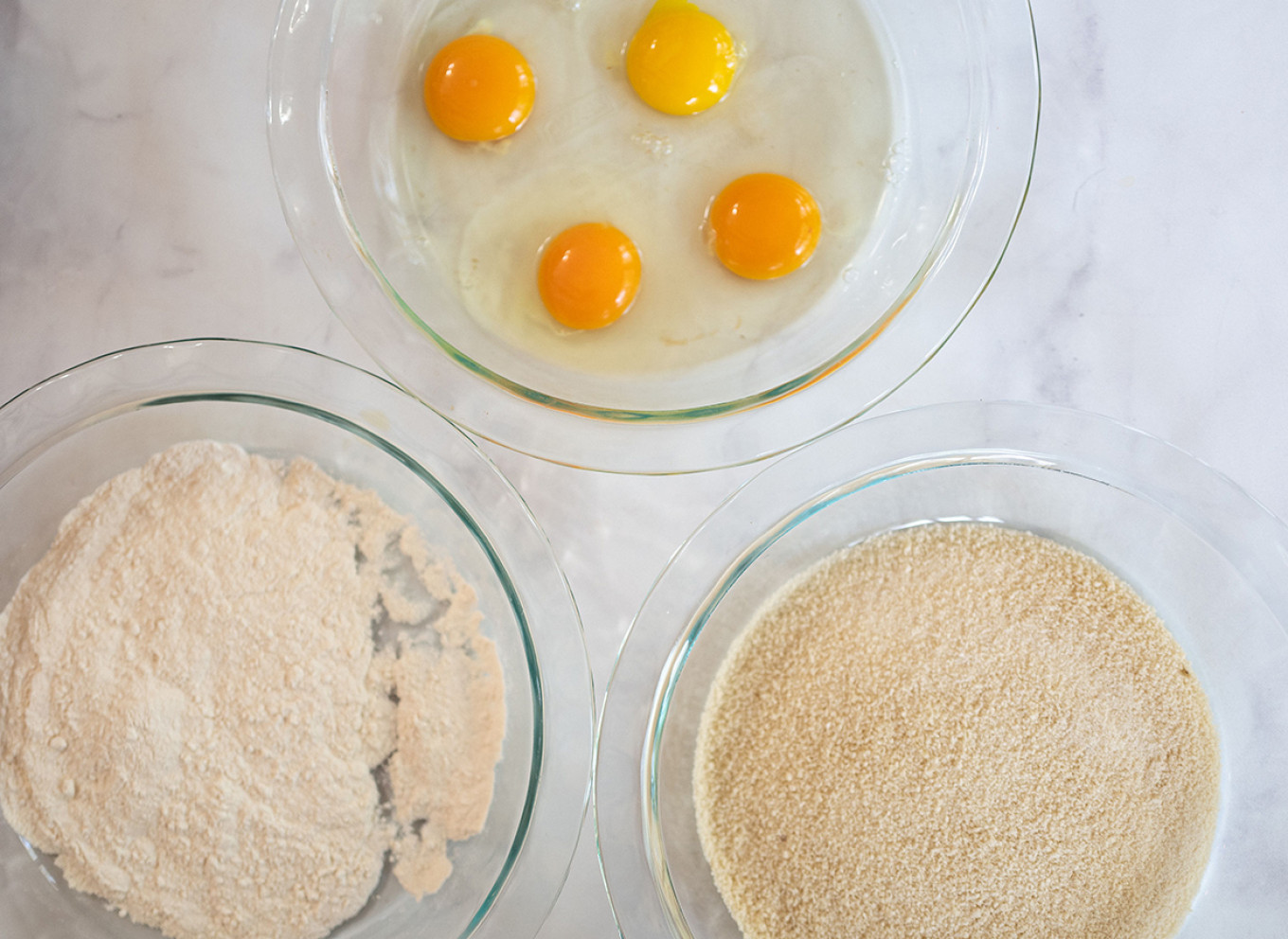
- Pat the breasts dry with paper towel, then dredge them in flour, shaking off any excess — you don’t want too much of the breading ingredients on the cutlets. Then dip the breast into the egg mixture and finally into the Panko bread crumbs.
- Heat the clarified butter in a large skillet over medium high heat until a small amount of the Panko topping sizzles immediately on impact. Gently slide each breaded chicken breast into the butter. After about 1-2 minutes, when you notice a golden crispness around the edges, agitate the skillet gently to move the butter around the breasts. After 3 minutes, flip the breasts and repeat the process. Continue to flip the breasts until they are uniformly golden and crispy on each side — about 6-7 minutes.
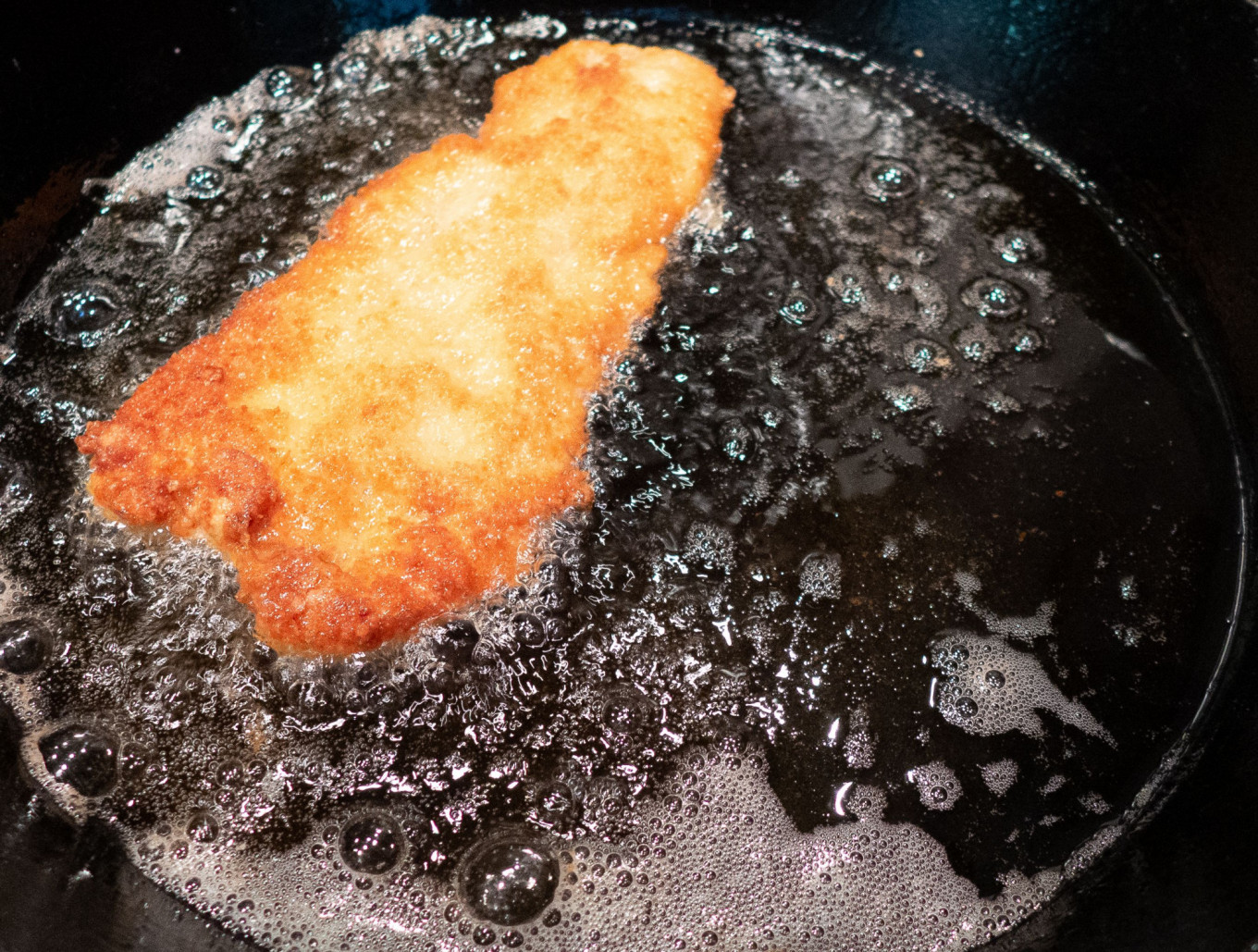
- Remove the breasts to a cooling rack set over a baking sheet to rest for 2-3 minutes and sprinkle a small pinch of salt over them. Serve immediately with a side of slaw and lemon wedges.
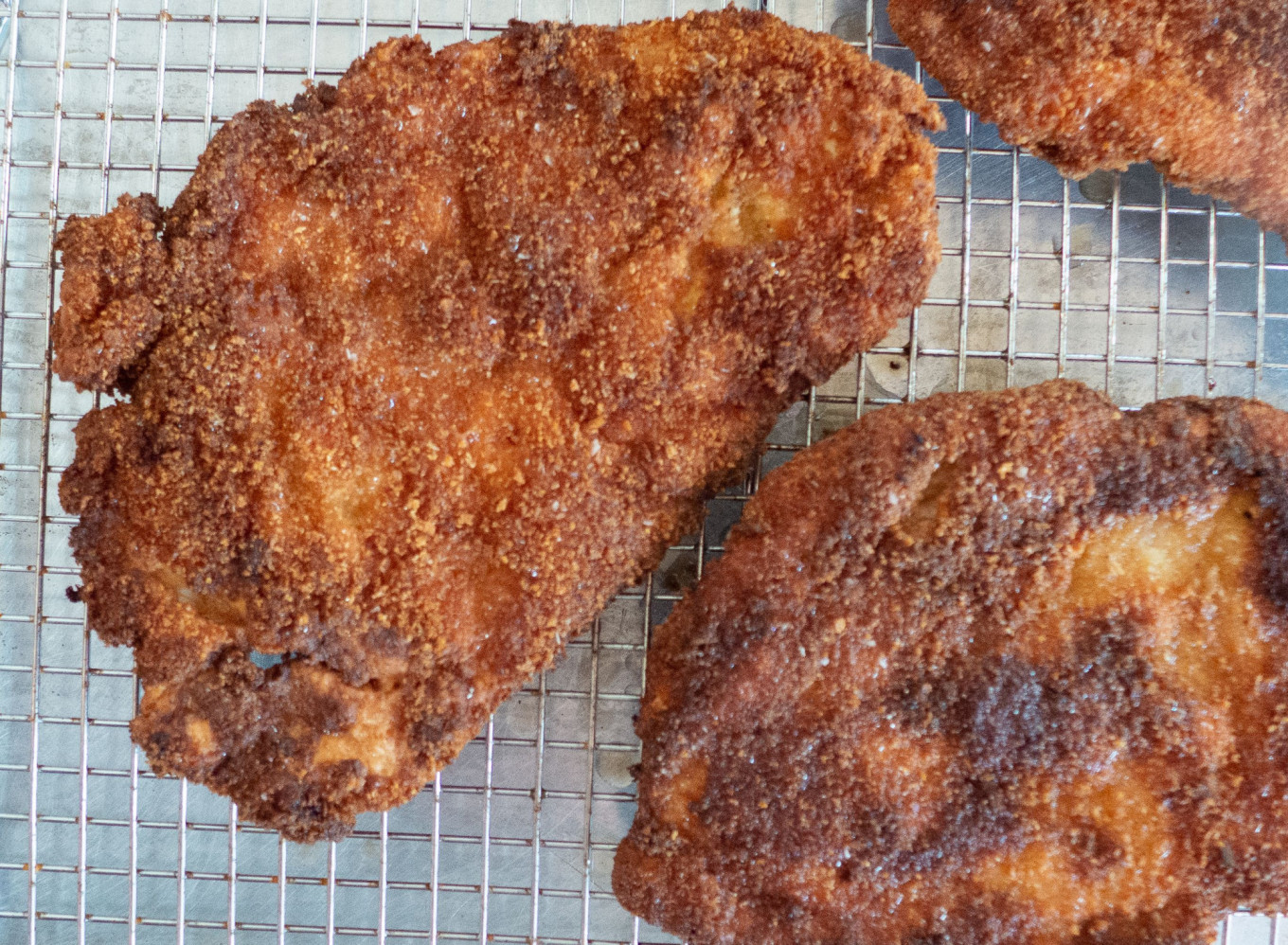
A Message from The Moscow Times:
Dear readers,
We are facing unprecedented challenges. Russia's Prosecutor General's Office has designated The Moscow Times as an "undesirable" organization, criminalizing our work and putting our staff at risk of prosecution. This follows our earlier unjust labeling as a "foreign agent."
These actions are direct attempts to silence independent journalism in Russia. The authorities claim our work "discredits the decisions of the Russian leadership." We see things differently: we strive to provide accurate, unbiased reporting on Russia.
We, the journalists of The Moscow Times, refuse to be silenced. But to continue our work, we need your help.
Your support, no matter how small, makes a world of difference. If you can, please support us monthly starting from just $2. It's quick to set up, and every contribution makes a significant impact.
By supporting The Moscow Times, you're defending open, independent journalism in the face of repression. Thank you for standing with us.
Remind me later.



